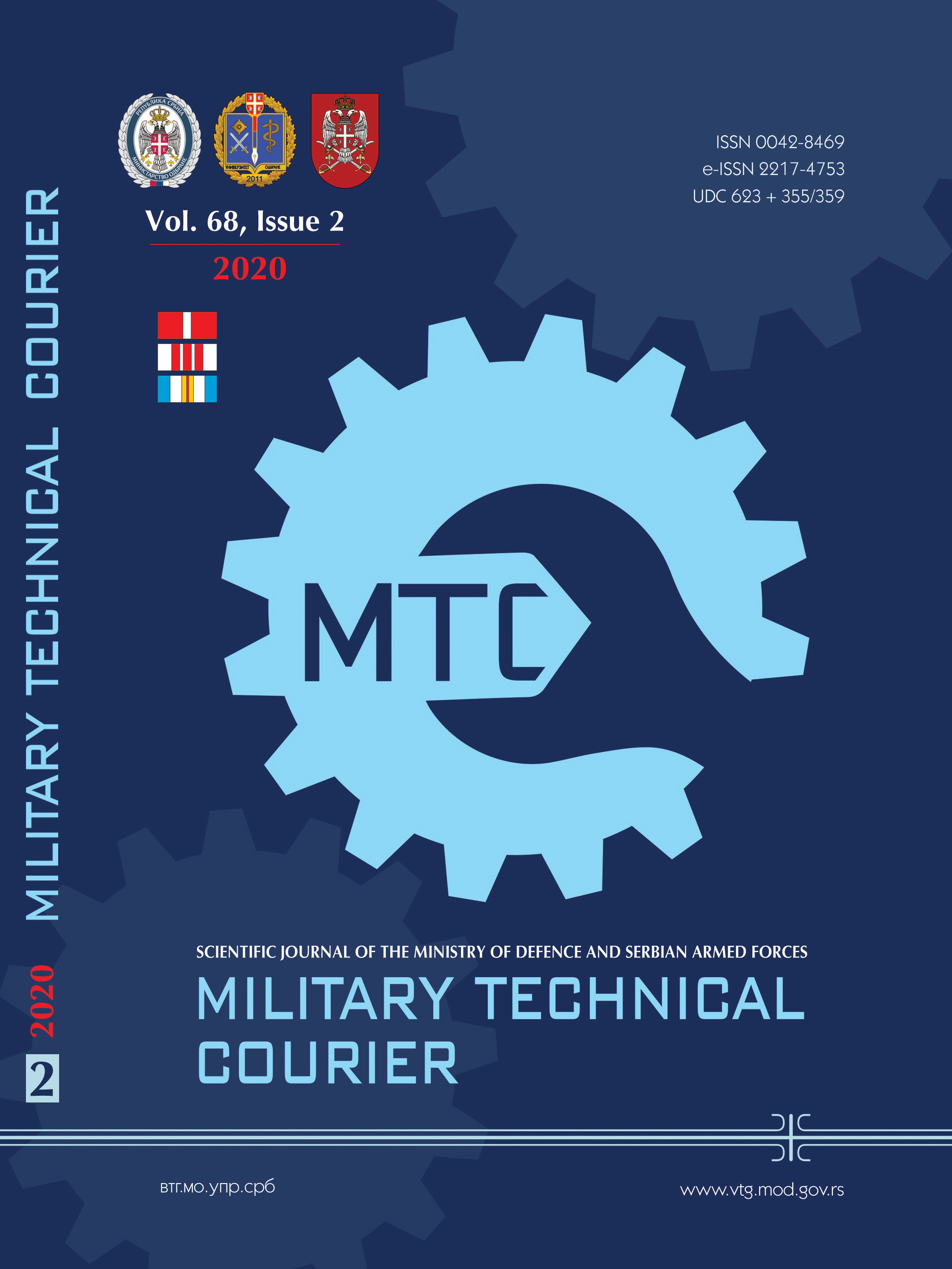Interatomic interaction in diatomic molecules with taking into account the repulsion of ions in a positively charged core
Abstract
Introduction/purpose: Different types of interactions in diatomic molecules of complex atoms are analysed.
Methods: The empirical formulas of Lennard-Jones, Buckingham, Buckingham-Corner, Morse, Danem, Gulbert-Hirschfelder, Klein and their combinations without their clear physical justification are used to take into account the repulsive and attractive forces in the molecule. To improve the situation of the binary interaction inside condensed matter, Gretchikhin and his associates proposed applying the Heitler-London quantum theory, but only at distances greater than equilibrium. At distances less than equilibrium between atoms in the binary interaction, the Lennard-Jones formula was still used. Using various kinds of fitting coefficients, in each case we obtained a match with the experimental data on the dissociation energy. A more general idea of all possible types of interactions was completely absent. In this connection, the need arose to reveal all possible types of interactions inside diatomic molecules and theoretically obtain dissociation energy, activation energy, and standard atomization enthalpy. The application of quantum mechanics methods in the Heitler-London theory allowed to take into account not only the Coulomb deterrence during exchange interaction, but also the Coulomb repulsion of nuclei.
Results: The electric dipoles for neutral atoms and for positively charged ions of the core of diatomic molecules were calculated. This made it possible to calculate the electron-dipole and dipole-dipole interactions. A theory of the repulsion of positively charged nuclei of complex atoms in diatomic molecules has been developed. The interaction potentials for the molecules of carbon, nitrogen, oxygen, aluminum, silicon, and sodium are calculated. The developed physical model of the formation of diatomic molecules is compared with the empirical potentials of Lennard-Jones and Morse. At the internuclear distance equal to the sum of the energy radii of atoms in the molecule, a potential jump occurs with a transition from the negative to the positive region of binding energies, which determines the activation energy of the formation of diatomic molecules.
Conclusion: From the obtained interaction potentials of atoms in diatomic molecules, the activation energy, ionization energy, standard atomization enthalpy, and electron affinity are determined.
References
Brattsev, V.F. 1966. Tables of Atomic Wave Functions. Moscow-Leningrad: Nauka, p.192 (in Russian). (In the original: Братцев, В.Ф. 1966. Таблицы атомных волновых функций. Москва.-Ленинград: Изд. «Наука», стр.1920)
Gombás, P. 1950. Das Variationsverfahren. In: Theorie und Lösungsmethoden des Mehrteilchenproblems der Wellenmechanik. Lehrbücher und Monographien aus dem Gebiete der Exakten Wissenschaften (Physikalische Reihe), 2, pp.151-217. Basel: Birkhäuser (in German). Available at: https://doi.org/10.1007/978-3-0348-6956-0_8.
Gretchikhin, L.I. 2004. Physics of Nanoparticles and Nanotechnologies. General Principles, Mechanical, Thermal, and Emission Properties. Minsk, Belarus: Technoprint Ltd., p.399 (in Russian). (In the original: Гречихин, Л.И. 2004. Физика наночастиц и нанотехнологий. Общие основы, механические, тепловые и эмиссионные свойства. Минск: УП «Технопринт», стр. 399)
Gretchikhin, L.I. 2008. Nanoparticles and Nanotechnologies. Minsk, Belarus: Pravo i Ekonomika IOOO, p.406 (in Russian). (In the original: Гречихин, Л.И. 2008. Наночастицы и нанотехнологии. Минск: ИООО «Право и экономика», 403 с.)
Gretchikhin, L.I. 2018. Chemical Bonds at Interatomic and Intermolecular Interactions. Chemistry Research Journal, 3(2), pp.1-11. [online]. Available at: http://chemrj.org/download/vol-3-iss-2-2018/chemrj-2018-03-02-01-11.pdf [Accessed: 21 January 2020].
Gretchikhin, L.I., Latushkina S.D., & Kamarouskaya, V.M. 2015. Induced potential between interacting particles at nanolevels. Vojnotehnički glasnik/Military Technical Courier, 63(3), pp.29-41 (in Russian). Available at: https://doi.org/10.5937/vojtehg63-7721.
Gretchikhin, L.I., Spiridonov, N.V., & Vasilenko, A.G. 1990. Improving the Adhesion Bond Melted by Laser Radiation of Thermal Spray Coatings. Physics and Chemistry of Materials Treatment, 3, pp.76-81. (In the original: Гречихин, Л.И., Спиридонов, Н.В., Василенко, А.Г. 1990. Повышение адгезионной связи, оплавленных лазерным излучением газотермических покрытий. Физика и химия обработки материалов, № 3. с.76-81)
Hirschfelder, J.O., Curtiss, C.F., & Bird, R.B. 1954. Molecular theory of gases and liquids. New York: Wiley, pp.xxvi+1219.
Radzig, A.A., & Smirnov, B.M. 1985. Reference Data on Atoms, Molecules, and Ions. Berlin: Springer-Verlag, p.466.
Slater, J.C. 1937. Wave functions in a periodic potential. Physical Review, 51(10), pp.846-851. Available at: https://doi.org/10.1103/PhysRev.51.846.
Yelyashevich, M.A. 1962. Atomic and Molecular Spectroscopy. Moscow: State Publishing House of Physics and Mathematics, p.890. (In the original: Ельяшевич, М.А. Атомная и молекулярная спектроскопия. Москва: Государственное издательство физико-математической литературы, 1962. стр. 890)
Proposed Creative Commons Copyright Notices
Proposed Policy for Military Technical Courier (Journals That Offer Open Access)
Authors who publish with this journal agree to the following terms:
Authors retain copyright and grant the journal right of first publication with the work simultaneously licensed under a Creative Commons Attribution License that allows others to share the work with an acknowledgement of the work's authorship and initial publication in this journal.
- Authors are able to enter into separate, additional contractual arrangements for the non-exclusive distribution of the journal's published version of the work (e.g., post it to an institutional repository or publish it in a book), with an acknowledgement of its initial publication in this journal.
- Authors are permitted and encouraged to post their work online (e.g., in institutional repositories or on their website) prior to and during the submission process, as it can lead to productive exchanges, as well as earlier and greater citation of published work (See The Effect of Open Access).

